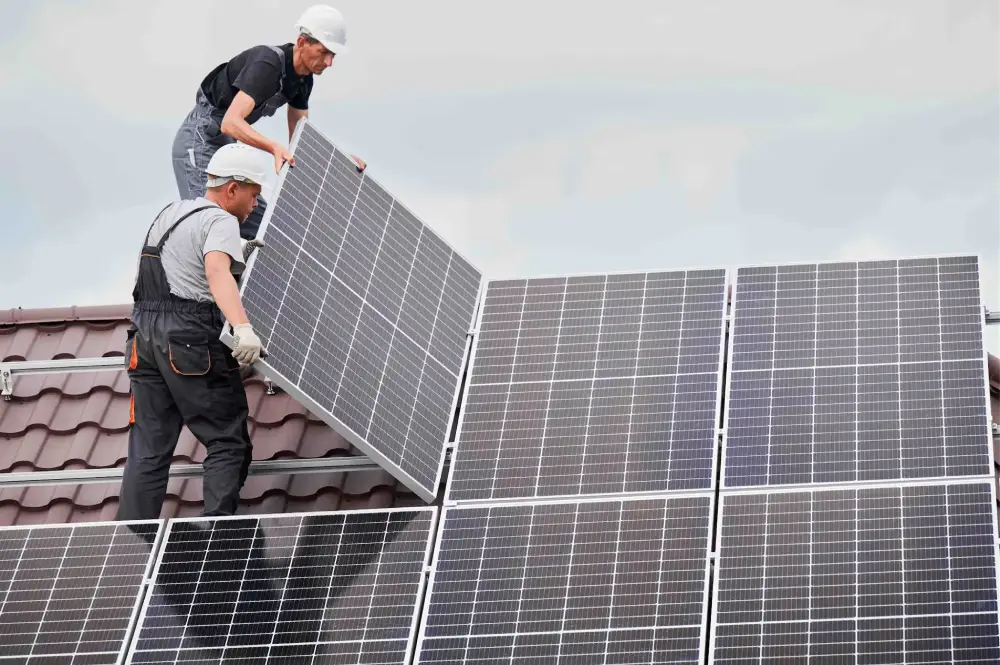In an era where sustainable living is more than just a trend, solar energy stands at the forefront of eco-friendly choices for homeowners. Making the switch to solar isn’t just about tapping into a renewable energy source; it’s about transforming the way you power your home, reducing your carbon footprint, and enjoying significant savings on energy costs. This guide is crafted to walk you through each step of adopting solar energy, ensuring you have all the necessary information for a smooth transition.
1. Evaluating Your Home for Solar
Assessing Solar Potential:
Your journey to solar energy begins with a thorough assessment of your home’s solar potential. This involves evaluating several key factors:
- Roof Condition and Space: The age, condition, and material of your roof are crucial. Solar panels typically have a lifespan of 25-30 years, so your roof should be in good condition. Additionally, consider the available space; larger systems require more surface area.
- Sunlight Exposure: The amount of direct sunlight your roof receives directly impacts the efficiency of your solar panels. Homes that receive ample sunlight throughout the year are ideal candidates. However, solar technology advancements mean that homes with moderate sunlight can also benefit significantly.
- Local Climate and Energy Needs: Your local climate and average energy consumption play a role in determining the size and type of system you’ll need. Colder climates might require panels with higher efficiency, while homes with higher energy usage may need a larger system.
Financial Considerations:
Understanding the financial aspect is critical in making an informed decision:
- Upfront Costs vs. Long-Term Savings: While the initial cost can be substantial, the long-term savings on energy bills, coupled with increasing energy costs, make solar a wise investment.
- Incentives and Rebates: Many regions offer financial incentives like tax credits, rebates, or grants to offset the initial investment. Research local and federal programs available in your area.
- Financing Options: If upfront costs are a concern, explore financing options. Solar loans, leases, and Power Purchase Agreements (PPAs) are popular choices that can make the transition more manageable.
2. Choosing Your Solar Panel System
Selecting the Right System:
Solar technology offers a range of options to suit different needs and budgets:
- Types of Solar Panels: Monocrystalline panels are known for high efficiency and sleek appearance, while polycrystalline panels offer a more budget-friendly solution. Thin-film solar panels, though less efficient, can be a good fit for certain types of roofs.
- Inverter Options: The inverter, which converts solar energy into electricity you can use, is a critical component. String inverters are common for most residential systems, but microinverters offer advantages in efficiency and performance, especially in shaded areas.
Finding a Reliable Installer:
A qualified installer is key to a successful solar project:
- Certification and Experience: Look for an installer with certifications from recognized industry organizations. Check their track record, reviews, and portfolio of completed installations.
- Consultation and Customization: A reputable installer will offer a consultation to discuss your specific needs and design a system that’s tailored to your home. They should also handle all aspects of the installation, including permits and inspections.
3. Installation and Activation
Installation Process:
The installation is a critical phase where precision and expertise are paramount:
- Mounting the Panels: Installers will set up mounting equipment on your roof, ensuring it’s secure and angled correctly for optimal sunlight exposure.
- Connecting to the Power Grid: Your system will be connected to the power grid, which involves electrical work to integrate it with your home’s existing electrical system.
Activation and Grid Connection:
Once installed, your system still isn’t quite ready to go:
- Inspections and Approvals: Local authorities will inspect the installation to ensure it meets all safety and quality standards. This is a crucial step for both your safety and system reliability.
- Net Metering: If your area offers net metering, you could receive credits for the excess energy your system produces, further reducing your energy costs.
4. Post-Installation: Maintenance and Maximizing Benefits
Maintaining Your Solar Panels:
Post-installation care is minimal but crucial for long-term efficiency:
- Regular Cleaning: Dust, leaves, or snow can obstruct sunlight. Gentle cleaning with a hose or at times, professional cleaning services can maintain efficiency.
- Annual Inspections: Though solar panels are durable, annual inspections by professionals can help detect and address any issues like wiring problems or inverter malfunctions.
Enhancing Solar Efficiency:
Getting the most out of your solar investment involves some smart strategies:
- Energy Management: Smart energy management systems can help you track and optimize your energy usage. These systems provide insights into your consumption patterns and suggest ways to reduce energy waste.
- Battery Storage: Adding a solar battery can enhance your system’s utility. Batteries store excess solar energy, allowing you to use it during non-sunny periods, further reducing your reliance on the grid.
- Upgrades and Add-ons: As solar technology evolves, consider future upgrades or add-ons that can boost your system’s performance, like more efficient panels or additional storage capacity.

